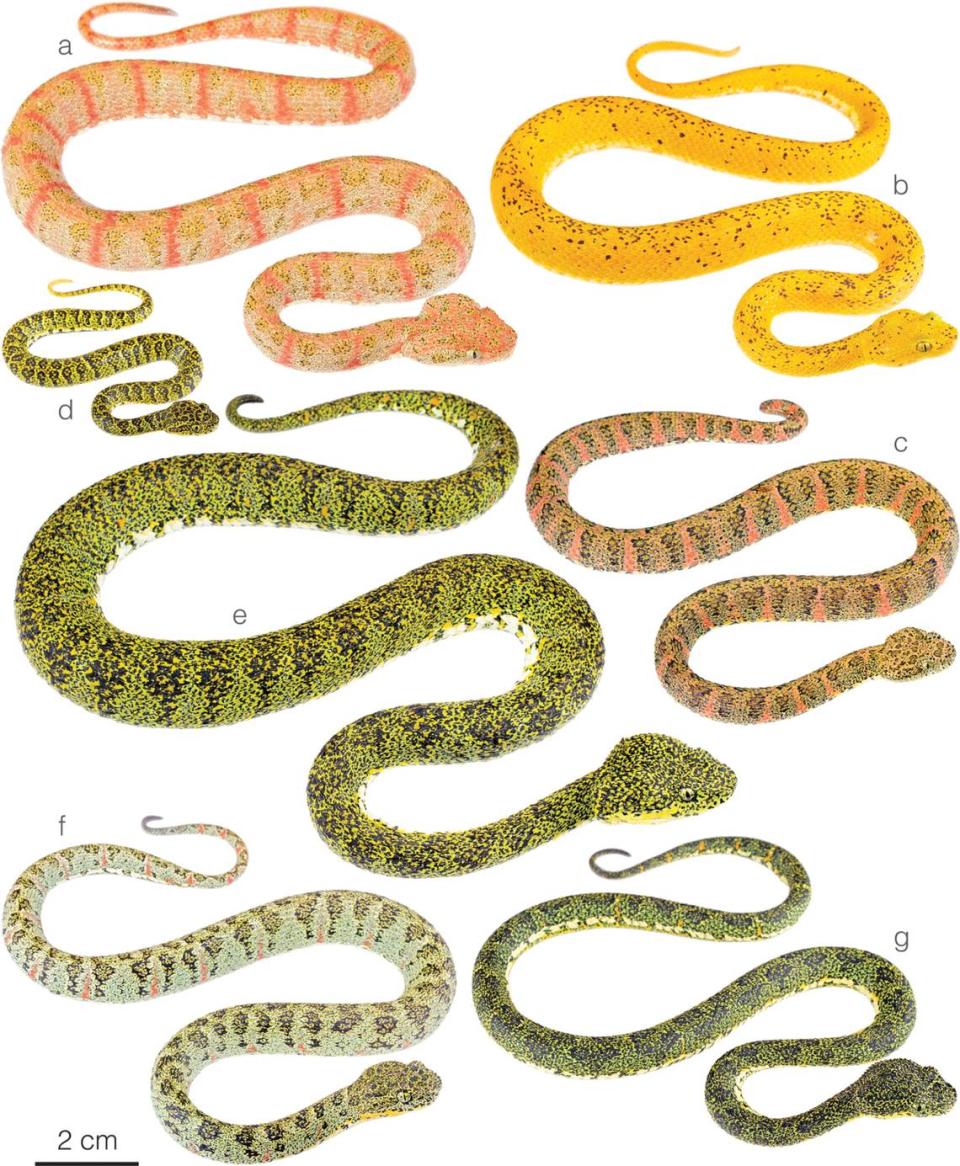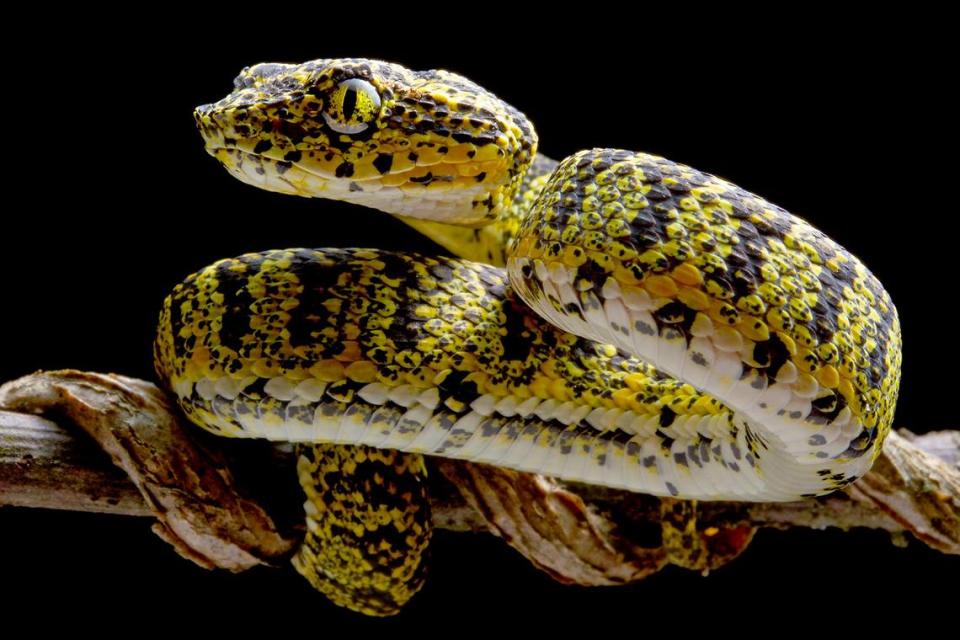Venomous 2-foot-long creature found lurking in Ecuador. See the ‘dazzling’ new species
In a forest of Ecuador, a 2-foot-long creature grabbed onto a branch and waited. Its yellow eyes stared into the trees without blinking. Perhaps it was looking for a meal or maybe for a mate.
Scientists interrupted the brightly colored animal — and discovered a venomous new species.
Researchers wanted to study a type of snake known as an eyelash palm pit viper, according to a study published Feb. 8 in the peer-reviewed journal Evolutionary Systematics. These snakes have scales above their eyes that resemble “eyelashes” but vary greatly in coloring and habitat.
Because of this variation, researchers suspected that some species of pit viper were being misidentified, the study said. They analyzed over 400 specimens from museum collections and started noticing a pattern.
Some snakes from Ecuador and Peru had shorter “eyelashes” and speckled stomachs. Researchers soon realized they’d discovered a new species: Bothriechis hussaini, or Hussain’s eyelash pit viper.
Hussain’s eyelash pit vipers can reach up to about 26 inches in length, the study said. They have “low” scales above their yellow or green eyes. Their tails are “prehensile” and capable of grasping.
Photos show the color variation of Hussain’s eyelash pit vipers. One snake is golden with brown speckles. Another is coral with pink bands. Several others have emerald green bodies with brownish black bands.

Discover more new species
Thousands of new species are found each year. Here are three of our most eye-catching stories from the past week.
→ 'Large' metallic creature — thought extinct for 100 years — rediscovered on island
→ Spiky 'blue-headed' creature found sleeping in forest of Peru
→Pregnant creature — with gold eyes — found on Australia island
Researchers described eyelash pit vipers as “dazzling” and “captivating” in a Feb. 12 news release from Pensoft Publishers.
“No two individuals have the same coloration, even those belonging to the same litter,” Alejandro Arteaga, the study’s lead co-author, said in the release.
Hussain’s eyelash pit vipers are tree-dwellers and have been found in forests, coffee farms and banana plantations, the study said.
The new species is venomous, but only one snake bite has been attributed to it, researchers said. A Hussain’s eyelash pit viper bit a biologist on the shoulder. The biologist experienced “intense localized pain, swelling” and a heightened heart rate but was given antihistamines and “recovered fully within 24 hours.”

Researchers said they named the new species after Prince Hussain Aga Khan, who “has devoted his life, influence, and wealth to environmental conservation” and founded Focused on Nature, a nonprofit to help protect “endangered global biodiversity.”
So far, Hussain’s eyelash pit vipers have been found in 55 locations in “southwestern Ecuador and extreme northwestern Peru,” the study said.
The new species was identified by its “eyelashes,” coloring, scale pattern and genitalia, the study said. DNA analysis found the new species had between 1.5% and about 11% genetic divergence from other eyelash pit vipers.
The research team included Alejandro Arteaga, R. Alexander Pyron, Abel Batista, Jose Vieira, Elson Meneses Pelayo, Eric Smith, César Barrio Amorós, Claudia Koch, Stefanie Agne, Jorge Valencia, Lucas Bustamante and Kyle Harris.
The team also discovered four more new species of pit viper: Khwarg’s eyelash pit viper, Klebba’s eyelash pit viper, Shah’s eyelash pit viper and Rahim’s eyelash pit viper.
Winged ‘fairy’ creature preserved inside amber belongs to ‘enigmatic’ new species
Venomous 1-foot-long creature found hunting in forest of Ecuador. It’s a new species
Forest creature — with ‘bluish green’ bones and red-streaked eyes — is a new species


